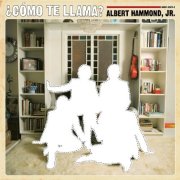 With the temperature dropping, it's time to find someone to keep you warm. Find your hookups with our online dating guide!
With the temperature dropping, it's time to find someone to keep you warm. Find your hookups with our online dating guide!
Como Te Llama
- thompson
- 2008
- Buy the CD
Reviewed by Jason Thompson
()
However, the guy behind that rhythm guitar lick, Albert Hammond, Jr., has been happily producing music during his main group’s everlasting vacation. This, his second solo work, is filled with the kinds of sounds Strokes fans will dig – and a bit more. After all, it’s a solo album, so the whole NYC rock vibe thing can be fucked around with a bit and relaxed when needed. And really, the songs that most resemble the Strokes’ offerings here are not carbon copies of that band’s sound straight out. Yet the whole affair is safe as milk and doesn’t tread too far out into the deep end, nor is it one of those wanking vanity projects that only the hippest will enjoy.
Hammond does love his reverb, though. Perhaps not since John Lennon have we heard someone work the echoed mic like Albert does here. “Bargain of a Century” sounds positively collegiate ‘90s, and then the soulfully cracked, echo-laden vocal comes in sounding like it has a wet blanket dumped on top of it while a clean-sounding guitar knocks out some slightly off-kilter notes. Hammond keeps the echo going for “In My Room,” which sounds like Strokes Lite. At times there sounds like there are traces of Television, before the popped-up chorus slides in and clears the artier clouds away. Yet it’s the way that Hammond dabbles with those ideas without giving into them fully that makes this stuff work.
“Borrowed Time” straddles both early Elvis Costello and Joe Jackson, so fans of those artists’ first pair of albums should dig right into the slightly jagged reggae-cum-punk groove. Again, though, the chorus suddenly turns into a completely different affair, sounding more Raspberries than angry young man in a skinny tie. Then there’s “G Up,” which features some more of that insane VU-inspired rhythm guitar that sounds like it’s been fueled on speed. The melody seems strangely familiar, too, coming out of the rhythmic din like some half-forgotten memory.
Yet there’s a clunker in every crowd, and the way-too-long sleepy-time instrumental “Spooky Couch” takes that award home here. It’s pleasant and all, but would have worked far better as a brief interlude than as a full-blown track threatening to dismantle the groove of the overall album. All right, so Hammond did have one moment of solo experimenting gone wrong here. But for the most part, this album is an enjoyable affair, though a lot of it does tend to start sounding the same about halfway through. Still, you could do a lot worse when it comes to guys from big time-bands making solo records. Just take a listen to any of Paul Stanley’s albums.
You can follow us on Twitter and Facebook for content updates. Also, sign up for our email list for weekly updates and check us out on Google+ as well.











